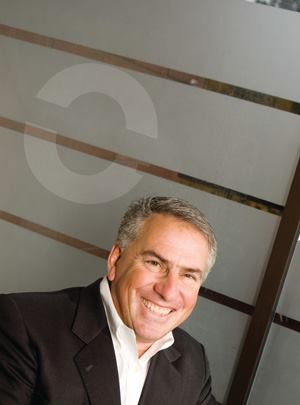It wasn’t always like that, though. Northland’s roots, for one, took hold in the ruins of the last real estate crash. In 1991, Gottesdiener started Essex Partners, a multifamily investment firm that bought properties from the Resolution Trust Corp. Six years later, he bought Northland and merged Essex into the company, keeping the Northland name.
By early 2007, Northland had a 50/50 split in its portfolio between multifamily and commercial. Instead of specializing in one market or one product type, the investments are located in various cities across the country—some of them with seemingly nothing in common. Today, the firm can develop, do value-add upgrades, or just buy and hold without performing renovations. It even has a $1.5 billion development pipeline with four different mixed-use projects to its name.
“Their approach to diversification is different,” says Gil Menna, a partner at Goodwin and Procter, a corporate and real estate law firm with offices around the country, who also chairs the firm’s REITs and Real Estate Capital Markets Group. “Most of our clients specialize on certain asset classes.”
Today, the strategy is different, although the buying rate wasn’t as accelerated—Northland bought 22 properties between 2004 and 2007 when cap rates fell to crazy numbers. That was part discipline, part the doing of the market. “In ’05 and ’06, when every single institutional buyer was competing for the same property, it was hard to buy unless you were a REIT, a big pension fund advisor, or you just didn’t care about money,” says Andrew Gnazzo, vice president with CW Capital in New York. “Maybe out of necessity they were forced to take a backseat a little bit.”
There was one advantage to sitting on the sidelines. Gottesdiener says the company has only two maturities totaling $85 million next year (the larger loan has a one-year extension), though it does have a couple in 2010. And when Northland did buy, it didn’t overextend itself. It relied on insurance companies and conduits for financing, until moving to Fannie Mae in early 2007. It usually puts about 25 percent equity into deals and relies on 75 percent leverage (overall the firm is leveraged between 55 percent and 58 percent). “It’s somewhat less than Wall Street was leveraging their equity at,” Gottesdiener says.
BUYING LESSONS
The strategy had Northland sitting pretty, ready to take advantage of opportunities in late 2007 and throughout 2008. At the helm was Rosenthal. After all, the 21-year legal veteran didn’t go to Northland to sit still. In October and November of 2007, just after he came aboard, Northland closed a few small transactions. Then, in December, Northland agreed to buy the debt under six conversions from troubled Tarragon Corp., a publicly traded apartment owner and condo builder based in New York.
Tarragon had bought the properties—five in Florida and one in South Carolina—for $300 million in 2005 and 2006. The deal included three broken condo properties (421 units in Florida and South Carolina) and three apartment communities (898 units in Florida). The plan was to convert them to condos. When the market turned, the builder found itself under water. That’s when Northland swooped in, offering to buy the 1,319 units across the six-property portfolio for $160 million and return them to the rental pool. It used its Fund II, which had $100 million, to facilitate the deal. “Tarragon was troubled, and Northland got itself in position to take advantage of an opportunity,” Menna says.
Northland and Tarragon took the plan to Barclay’s, which held the debt on the properties. The London-based retail and commercial banking firm agreed to the deal. “It was one of the first deals where someone was buying distressed assets financed by the seller,” says Robert Given, an executive vice president with CBRE in Miami who has worked with Northland on several deals in Florida. Given estimates that Tarragon got the properties at 75 percent of replacement costs and 55 percent of original costs. Unlike many companies coming into the Florida market, Northland was able to secure properties that were stabilized, so he sees the deal as a big win for the firm.
